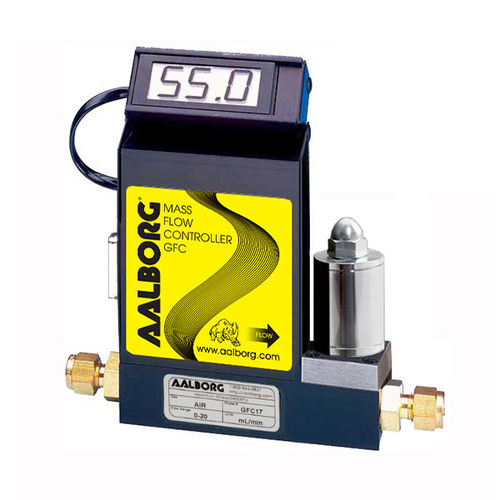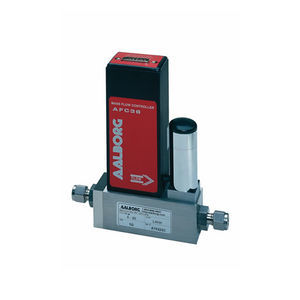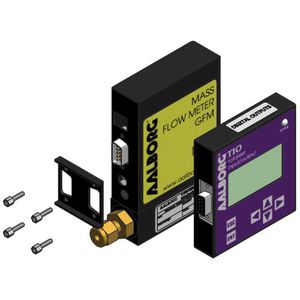
- Hydraulics - Pneumatics
- Valve
- Mass flow regulator
- Aalborg Instruments
- Company
- Products
- Catalogs
- News & Trends
- Exhibitions
Thermal mass flow controller GFC for gaswith LCD displayanalog output




Add to favorites
Compare this product
Characteristics
- Technology
- thermal mass
- Fluid
- for gas
- Other characteristics
- with LCD display, analog output, precision, compact, stainless steel, for OEM, for low flow rates, for high flow rates, cost-effective
- Flow rate
Max.: 1,000 l/min
(264.17205 us gal/min)Min.: 0 l/min
(0 us gal/min)- Pressure
Max.: 1,000 psi
Min.: 5 psi
- Nominal diameter
Max.: 0.8 in
Min.: 0.1 in
Description
Design Features
• ± 1% FS accuracy is standard
• rigid metallic construction
• available flow ranges starting from 0 to 10 sccm up to 0 to 1000 slpm
• maximum pressure of 1000 psig (70 bars)
• leak integrity 1 x 10-9 sccs of helium
• NIST traceable certification
• built-in tiltable LCD readout (some models)
• local or remote setpoint control
• 0-5 Vdc and 4-20 mA signals
• circuit protection
• totalizer option
LCD display is optional, also offered with remote display
Aluminum models are available
Model GFC thermal Mass Flow Controllers are designed to indicate and control set flow rates of gases.
The GFC combines the characteristics, and accuracy of conventional mass flow devices into a unique compact design at low costs previously unattainable. Each of these controllers incorporates an advanced straight tube sensor in conjunction with flow passage elements constructed of aluminum and brass for non-corrosive gases or 316 stainless steel for corrosive applications. Zero and span adjustments are accessible from the outside of transmitters.
Principles of Operation
Metered gases are divided into two laminar flow paths, one through the primary flow conduit, and the other through a capillary sensor tube. Both flow conduits are designed to ensure laminar flows and therefore the ratio of their flow rates is constant.
Two precision temperature sensing windings on the sensor tube are heated, and when flow takes place, gas carries heat from the upstream to the downstream windings. The resultant temperature differential is proportional to the change in resistance of the sensor windings.
VIDEO
Catalogs
Other Aalborg Instruments products
Mass Flow Meters / Controllers
Related Searches
- Aalborg valve
- Hand valve
- Control valve
- Stainless steel valve
- Water valve
- Threaded valve
- Electrically operated valve
- Regulating valve
- Stop valve
- Gas solenoid valve
- Normally closed solenoid valve
- 2-way solenoid valve
- Biogas valve
- Valve for industrial applications
- Metal solenoid valve
- Nickel-plated brass valve
- 2-way valve
- Water solenoid valve
- Electrically-operated valve
- Flow control valve
*Prices are pre-tax. They exclude delivery charges and customs duties and do not include additional charges for installation or activation options. Prices are indicative only and may vary by country, with changes to the cost of raw materials and exchange rates.












